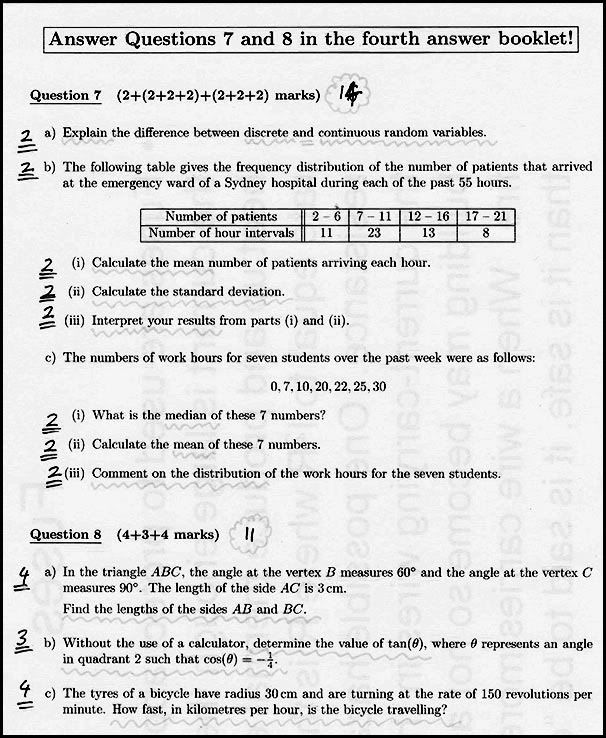always.dreaming
sporadic attendee
- Joined
- May 15, 2006
- Messages
- 157
- Gender
- Undisclosed
- HSC
- N/A
Hi there,
This morning I started working through a sample paper, can anyone please check what I have done already and also help me out with the rest of the paper?
I don’t have the answers so if anyone was kind enough to work through any of the questions to a solution that would be great thanks!


Question 7
a)
A numerical outcome of an experiment is called a random variable. If we can enumerate all possible outcomes by integers, the random variable is called discrete. If on the other hand the random variable can assume all values in some defined interval of real numbers, the random variable is called continuous.
b)
i)
10.64 (2dp)
ii)
4.82 (2dp)
iii)
…the distribution is negatively skewed.
c)
i)
15
ii)
16.26 (2 dp)
iii)
The distribution is slightly positively skewed






This morning I started working through a sample paper, can anyone please check what I have done already and also help me out with the rest of the paper?
I don’t have the answers so if anyone was kind enough to work through any of the questions to a solution that would be great thanks!


Question 7
a)
A numerical outcome of an experiment is called a random variable. If we can enumerate all possible outcomes by integers, the random variable is called discrete. If on the other hand the random variable can assume all values in some defined interval of real numbers, the random variable is called continuous.
b)
i)
10.64 (2dp)
ii)
4.82 (2dp)
iii)
…the distribution is negatively skewed.
c)
i)
15
ii)
16.26 (2 dp)
iii)
The distribution is slightly positively skewed






